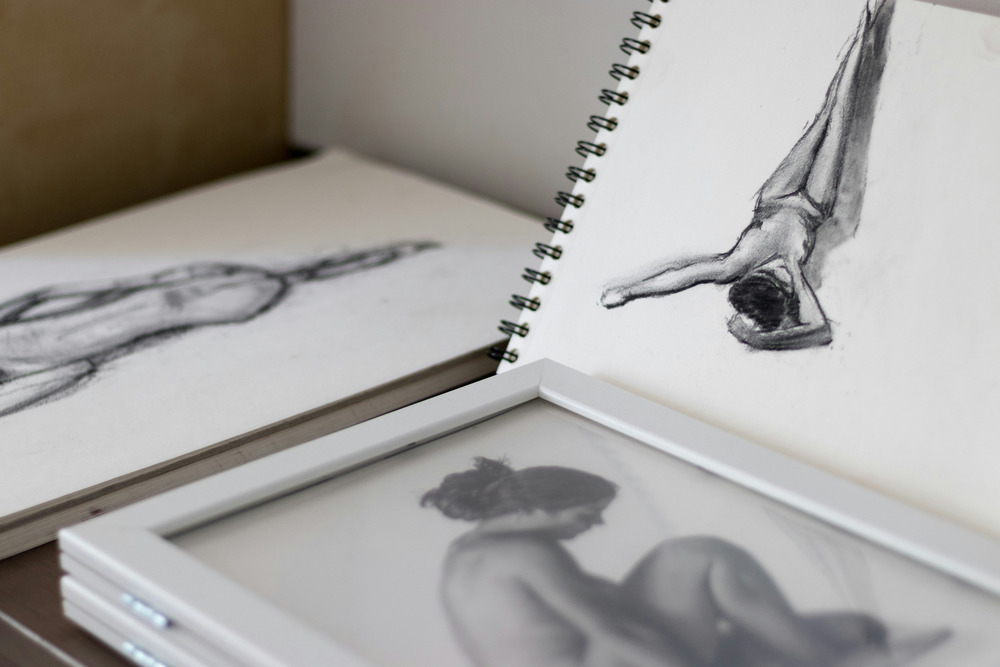Interviews
Tobias Carroll’s Beautiful Dissonances
Talking music, genre borders and weird things with the author of the new books Reel and Transitory

Tobias Carroll is having two debuts. His first story collection, Transitory, was released by Civil Coping Mechanisms in August, and his debut novel, Reel, followed soon after, from Rare Bird. The publication of these two very different books places Carroll, who many people know as an outstanding literary citizen and indie press advocate, at the forefront of a new wave of literary fiction authors whose work relentlessly explores new terrain and pushes against the dividing line rumored to exist between literary fiction and genre fiction. Although he has two books to promote, Carroll’s efforts as editor, reviewer, and interviewer are not dwindling. He writes fiction and nonfiction for a plethora of publications. He’s also the managing editor of Vol.1 Brooklyn and his writing has appeared in venues as diverse as Rolling Stone, Tin House, Midnight Breakfast, The Collagist, Bookforum, Joyland, Necessary Fiction, Men’s Journal, and Underwater New York. All things considered, it struck me as the perfect time to sit down and have a digital chat about the way his debut novel came together, the diverging spaces it inhabits, and how he is navigating having two books published almost simultaneously in a saturated literary landscape.
Gabino Iglesias: The publishing business works on its own time, which means you went from having no books out to having a debut novel and a short story collection published simultaneously. How are you navigating the promotional process? Are you doing separate readings or presentations for both?
Tobias Carroll: I think I’ve been navigating it all right. It’s a difficult thing to figure out: I want to make sure I’m getting the word out about the books, but I also don’t want to overwhelm people or feel overly one-note. And having both presses in my corner has also been great: both Civil Coping Mechanisms and Rare Bird have been terrific to work with.
So far, the readings I’ve done have been from one book or the other. I’m going out to the west coast next week, and I think I’m going to read a shorter section from each book at the Seattle and Portland readings. There are a few reading-sized stories in Transitory, and I have a few chapters from Reel that work in various timing configurations.
GI: Reel belongs to the realm of literary fiction, but there are some bizarre elements in there that push parts of the narrative into the territory of mystery/surreal fiction. Where you intentionally trying to walk a line between genre and literary fiction?
TC: It wasn’t intentional at first. I’d tried writing different versions of this story for a long time before this version of it clicked. When I arrived on Timon’s profession, I drew some inspiration from William Gibson’s Pattern Recognition, in terms of having a character who has a borderline-uncanny ability in an otherwise realistic setting. Gibson’s novel was one of three works that I’d say substantially influenced the form that this took; the others would be Javier Marías’s Your Face Tomorrow and, to be very esoteric, a short Warren Ellis/Jim Lee Batman story that was essentially about all of the random and esoteric knowledge that one would have to amass in order to be Batman. (Which I realize also has some roots in the Sherlock Holmes stories, but–can’t really argue with Batman.)
By the end, there were some broader thematic things going on–I kind of view the novel he’s in as a strange joke on Timon. In another, pulpier, book, he might be an eccentric detective who solves mysteries and uses arcane knowledge in unexpected and heroic ways. But in this one, he’s just a guy who knows weird things, drinks too much, and sometimes acts like an asshole.
He’s just a guy who knows weird things, drinks too much, and sometimes acts like an asshole.
GI: In the novel, the two main characters, Timon and Marianne, briefly crash into each other and then continue on with their lives. As a result, the narrative is, more than a collision between two different forces, a story about a couple of individuals who inhabit different spaces after their encounter. Keeping them separated was interesting and unexpected. Why did you decide to tell parallel narratives instead of a single one?
TC: Essentially, that’s how the story went as I was writing it. The process for this novel involved working without an outline, which was a reaction to a failed novel I’d finished beforehand that was far too dependent on a pre-existing structure/outline. As the novel developed, the fact that they were each doing their own thing became more and more clear, and I liked playing with the ways in which their paths almost cross after that initial meeting….but don’t. (There’s a Rick Moody novella called “The Carnival Tradition” that was an influence here.)
One of the reasons the book was called Reel was a nod to the fact that the word “reel” can refer to a dance, and once I was reminded of that, that as a narrative/structural element seemed to make much more sense. And I was also nodding in the direction of the Halo Benders song “Virginia Reel Around the Fountain,” where Doug Marsch and Calvin Johnson each sing a set of lyrics that have no real connection yet wind around one another. But I think that counterpoint is essential–I like the Built to Spill version of it on their live album, but I don’t quite think it works as well, even though it may be, from a technical perspective, the “better” one. I like weird dissonances.
GI: Through Timon, readers get a meta-commentary on art as well as a scathing look at familial relationships forced to operate within the context of a business. However, music is also an ever-present element that is celebrated through language as something that profoundly changes our lives. Did you create these elements to stand on their own or did you intend for them to be in opposition?
TC: Timon’s fondness for music was a hard thing for me to write at times, because it involved someone getting into something that I’m into, but doing it in part for the wrong reasons. Alternately: if I saw someone act like that at a show, I’d want to stay the hell away from them. (About two years ago, I was at a show where someone basically ran through the crowd smashing into people…right up until the point where he ran into someone who clocked him. Which I don’t think anyone in the crowd shed too many tears over.)
For me, the course of Timon’s relationship with music is an element that’s constantly shifting. It might be a way for him to find some kind of peace and some kind of sense of belonging, or it might further alienate him from everyone around him. I think Marianne has a much healthier relationship to art (and the world at large), and that’s definitely intended as a contrast to Timon blundering his way towards some greater awareness…or not.
GI: Your short stories are graceful and poetic, but Reel afforded you much more space and thus your lyricism came to the forefront. You obviously take your time constructing sentences, but there is also the grit of real life and dingy clubs in your prose. How did you achieve this balance?
TC: I knew that I wanted to have these big loping sentences whenever Timon was going into one of his spells of bad behavior in a crowd, to evoke the way that he’d give himself up to alcohol and instinct and lose all restraint. A lot of it was writing what felt right, as far as getting inside of his head–whether it was in a situation like that or in a stiller scene like some of his moments of research. Timon is a character who essentially becomes consumed by certain moments, and I tried to convey that as best I could in prose.
GI: The atmosphere of your novel can be described as one of agitated stagnation, but one that feels more generational than individual. It also takes places in Seattle, which adds a touch of big city chaos. Lastly, you had to describe entire lives and a wide array of different situation for two main characters. What can you tell us about juggling all those elements within the context of a short novel?
TC: The generational theme was (mostly) fun to play around with–coming up with this family who had this bizarre business running that was structured around a host of borderline-ritualistic behaviors. I have a very good relationship with my own family, though I definitely think that there were certain questions bouncing around in my head about certain larger questions of family and tradition that influenced the way that this novel was written, and how it unfolded. And I liked the idea of Seattle as a location, where both Timon and Marianne would be essentially on their own, without many people from their pasts being there. My own roots are very, very northeastern–my mom was born and raised in New Jersey, my dad grew up on Long Island–so I was definitely writing the opposite of what I know. And pretty consciously, at that.
GI: Let’s switch it up. How did you go about selecting the stories that are included in Transitory?
TC: Transitory came together pretty quickly, though the final book also contains stories written over the course of about a decade. Essentially, I saw the announcement of CCM’s Mainline competition. My friend Sean H. Doyle suggested that I submit a short story collection to it. That night, I sat down and looked at all of the stories that I’d had published up until that point. I figured out a group that went pretty well together, worked out an order for them, and pasted everything into a Word document.
As far as the selection process, there aren’t many stories that I’m not happy with–the handful that didn’t go into this one were more for stylistic/thematic reasons than anything else, and if ever get to do another collection, I think they’ll be in there. Basically, I wanted to find a good balance between the more realistic work I’ve done and the more surreal stories. In terms of the sequence, it was like putting together a mixtape–I wanted to maintain a good flow, and I wanted to keep changing things up. I liked the idea of a weirder story going into a more realistic one; I wanted to keep people on their toes.
GI: You are a freelance writer, a book reviewer, an interviewer, and run Vol. 1 Brooklyn, which offers new content daily. When do you write and edit your own work?
TC: It’s gotten trickier than I’d like. In terms of shorter pieces, having a reading or something coming up can help–though now, most of the readings I’ve been doing have been book-centered rather than anything else. A lot depends on deadlines for freelance assignments: right now I’m trying to get a huge amount of freelancing done before doing a few readings out west, and that’s taken up the bulk of my time. I also rearranged my writing space pretty recently, and I’ve found that so far (knock on wood), it’s made me a lot more productive.
GI: I’ve had some recent discussions with writers and editors about “good literary citizens,” and your name comes up every time. Who do you consider a good literary citizen?
TC: That is all kinds of flattering to hear. There are a lot of people who I’d consider to be good literary citizens–you’re definitely one of them. I’d also cite (off the top of my head) Rob Spillman at Tin House, Janice Lee at Entropy, Michele Filgate, Saeed Jones, Constance Ann Fitzgerald, Jeffrey Zuckerman, Mairead Case, Ian MacAllen, Isaac Fitzgerald, Penina Roth, Natalie Eilbert, J. David Osborne, and Jason Diamond–and a whole lot more. Basically, anyone who’s helping to amplify a whole lot of voices in addition to their own, helping raise the level of discussion around issues cultural and sociopolitical, and generally being decent human beings to boot.
GI: Thank you for that. Now let’s talk music. Having authors create a playlist for their books is a very popular thing nowadays, but Reel demands I ask you about the music you’d recommend/the music you were listening to while writing it.
TC: I’d definitely cite a lot of early-00s music from Seattle in terms of putting a playlist together: Sharks Keep Moving, Waxwing, Rocky Votolato, Carissa’s Wierd, Red Stars Theory, and Lois would all come to mind off the top of my head. A lot of Reel was written in coffee shops, so I’d have to say that the bulk of the music that I listened to while writing it was whatever was on in there at the time. I can remember the coffee shops–including two in Eugene, Oregon–really well; the music, less so.









